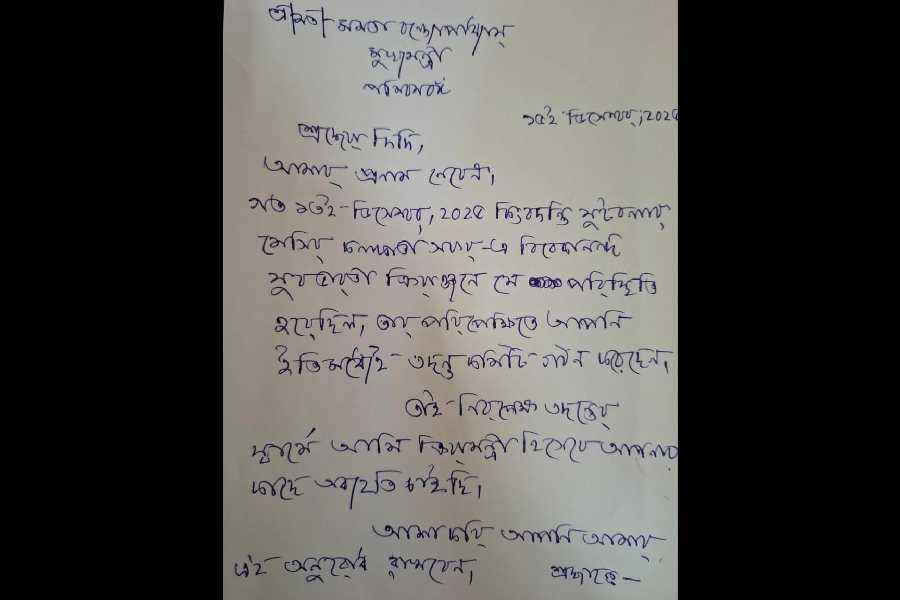An Afternoon with My Father (held at the Ganges Art Gallery) features Swapan Nayak’s photographs created using the 19th-century gum bichromate printmaking method. This labour-intensive process demands expertise in chemistry, photographic history, and artistic sensitivity. Remarkably, it results in a painterly quality on paper.
The exhibition uses two texts. The first sets the tone by recounting Nayak’s childhood memories of a vivid afternoon with his father, during which the author encountered fantastical beings, such as fairies and talking trees, in a vast field. These imaginative experiences have shaped his artistic journey, characterised more by metaphor than description.
Although without mention, Nayak’s introductory text combines passages from Humayun Azad’s I Remember Abbu (1989) and Orhan Pamuk’s Museum of Innocence (2008) and Other Colours (2011). Despite its somewhat abrupt shift from whimsical fantasy to metaphysical truth, the text frames the reading of the photographs and resonates deeply with Nayak’s poignant declaration: “My father passed away in December 2019.”
He develops images that consciously move away from documentation, crossing a bridge from memory to imagination. The spectator sees the mundane and a little more through the filter of grief. The alienating effect is completed with a non-urban, non-rural soundscape. A scarecrow, its loose shirt fluttering in the wind, bougainvillaea dangling in front of an apparition of a man, earthen pots tied together to please some divinity, a tight shirt holding on to a vanished body, an ambassador car with cavities for light, a forsaken doll in a doomed city — all tainted by a blue monochrome tint, evoke a sense of neglect and loss.
The second text is an imagined letter from Nayak, offering paternal advice on living without anxiety. The exhibition represents the son’s difficulty in expressing his perceptions of the world. In this regard, the visual fragments function as yet another letter, shaped by viewers’ associations and interpretations as they explore the exhibition.

![An artwork by Swapan Nayak from the show, An Afternoon with My Father [Ganges Art Gallery]](https://assets.telegraphindia.com/telegraph/2024/Apr/1714184326_bluefinal.jpg)








